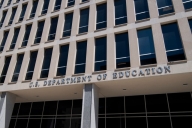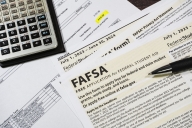You have /5 articles left.
Sign up for a free account or log in.
The U.S. Department of Education last fall switched its approach to estimating how much it improperly paid out in Pell Grants and student loans after officials learned their initial methodology would have shown large jumps in erroneous payments, the department’s watchdog unit said in a report issued Tuesday.
The revised methodology, which the department retroactively received permission from the White House’s Office of Management and Budget to use, produced far lower estimates of improper payments than the department’s original methodology, according to the Office of Inspector General’s report.
The Education Department, like other federal agencies, is required to estimate each year the rate at which some of its programs improperly dole out federal dollars. Such erroneous payments include, for example, a student receiving a Pell Grant that is above or below the amount for which he qualifies. It would also include a college not properly returning federal loan money after a student withdraws from classes.
Historically, the department has estimated improper payments by taking a representative sample of Pell Grant and loan recipients and looking at discrepancies between their self-reported income data and their federal tax filings.
Last year, though, the department decided to take a new approach. It started extrapolating improper payment rates based on the errors it happened to uncover during audits of colleges during the previous year.
The department originally planned to weight its results based on the number of colleges it audited. But after running those numbers, according to the report, the department switched its approach. It instead weighted the improper payment rate based on the total amount of dollars covered by the audits.
The change was dramatic. Had the department stuck to its original methodology, the report says, its estimated improper payments for the Pell Grant program in fiscal year 2014 would have been about 4.28 percent, instead of the 2.16 percent rate it published, representing a difference of about $669 million.
For the direct loan program, the department’s published improper payment rate was 1.5 percent, but the original methodology would have yielded a 2.64 percent rate, a difference of $1.16 billion, according to the inspector general’s calculations.
Department officials rejected the report’s allegations about the methodology switch as an “inaccurate representation” of what happened. In a letter responding to the report, department officials said they redid the estimate out of concern for its statistical reliability, not because they were unhappy with the original results.
“The methodology was changed not due to the estimate being higher, but rather due to the inaccuracies within the estimate, which made the estimate an unreliable method,” the officials wrote. “In other words, running the data through the methodology revealed deficiencies in the methodology that needed to be addressed.”
The Office of Inspector General report also says that the department incorrectly told the Office of Management and Budget just days before it published the final results on erroneous aid payments that it had not changed the methodology, even though it actually had.
It was only after the inspector general finished its investigation -- and some four months after the department finalized and published its improper payment rates -- that officials sought and received approval for the revised methodology, the report says.
Aside from criticizing its sudden methodology switch, the inspector general's report takes aim at the department’s overall approach to calculating the improper payment rate for student grants and loans.
The department’s estimates and methodologies were “inaccurate, incomplete and unreliable,” the report says.



